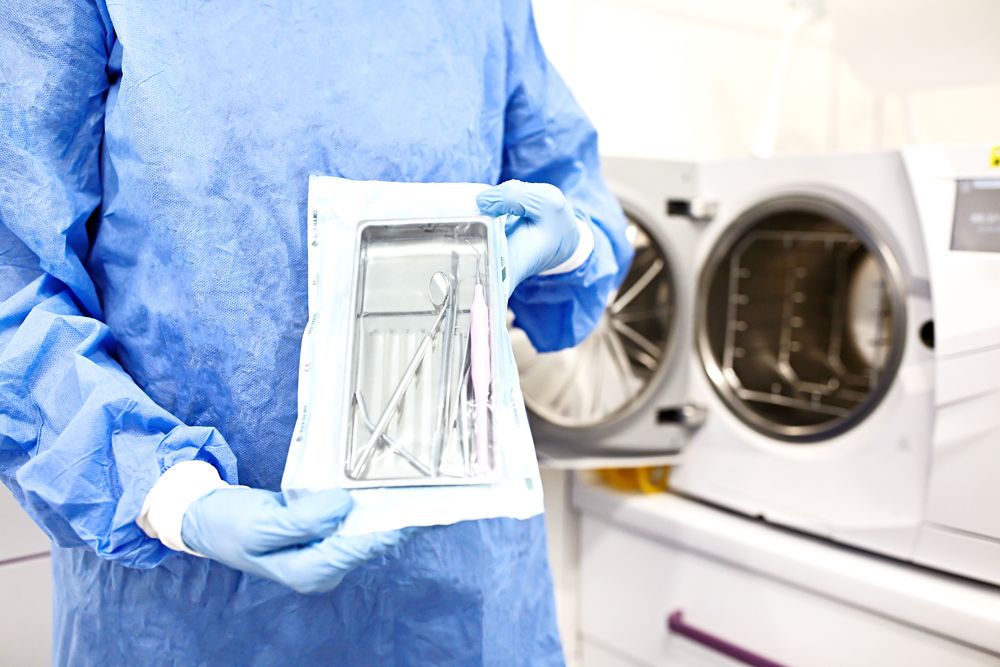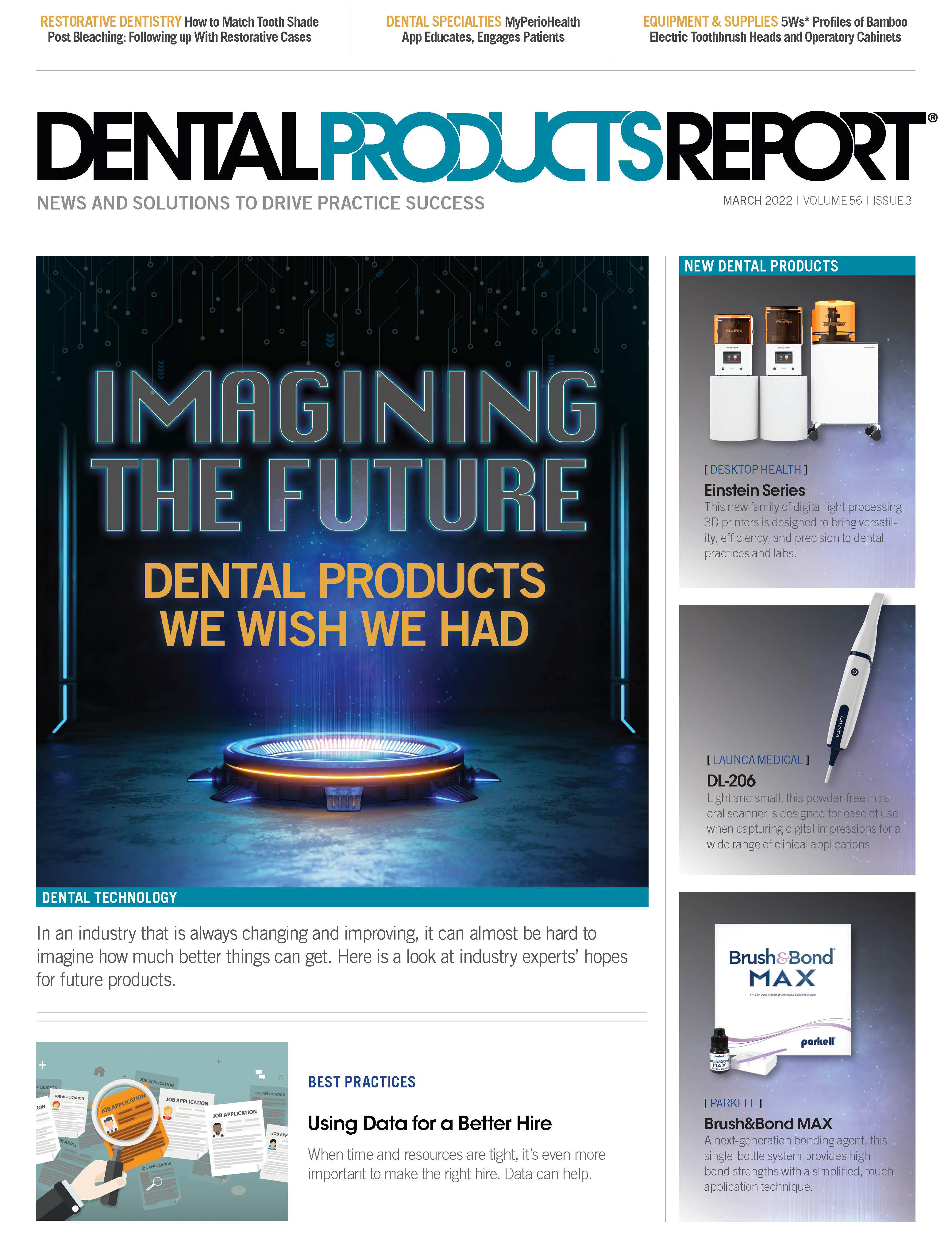Which Automatic Processes make Infection Control More Efficient for Dental Practices
Infection control practices can be made more efficient by way of automation. Here we gain insight on best practices for automating infection control protocol.
Which Automatic Processes make Infection Control More Efficient for Dental Practices. Photo courtesy of Kseniia/stock.adobe.com.

There is a negative connotation when one talks about doing something being “on autopilot”. The implication is that the task is performed mindlessly and without attention to detail. However, that is not always the case. Automating a process can also be a means to assure that something is performed regularly, consistently, and efficiently. Certain infection control processes and equipment can – and should – be automated, assuring the best outcomes.
People and processes
At a personnel level, scheduling specific tasks on the calendar ensures that they are part of the team’s routine.
“It’s more automatic for the staff and for the practice,” Douglas Risk, DDS, says. Dr Risk is the Compliance Manager and private practitioner at Tidewater Dental in Southern Maryland, serves on the Executive Board of Directors for OSAP, is a Diplomate of the American Board of General Dentistry, and is a Fellow of the International College of Dentists. “When you put those processes is in place, you don't have to get something out and put it on the counter, or you you don't have a workflow that works for you.”
He also recommends automatically staggering the use of operatories. Doing so eliminates the need to rush to turn a room around before the next patient.
“We have time to clean that patient room up while I'm working in a different room,” Dr Risk says. “The assistants and everyone has time to turn that room around without a lot of pressure that somebody else has to get in there in the next couple of minutes.”
He also recommends using checklists to automate the procedures associated with specific tasks.
“We have used checklists in infection control in a variety of settings: Instrument processing, operatory turnover, and waterline testing, to name a few,” Dr Risk says. “In instrument processing, the 10 steps of disinfection and sterilization have been posted in the instrument processing center on sheets where the tasks are to be completed, ‘What to do and why?’ are part of the posters, and it has been shown to improve compliance with each step in the process.
“Operatory turnaround should be accomplished the same way for each patient visit,” he continues. “Sharps disposal, precleaning surfaces, disinfection, and instrument transport all should be completed in the proper sequence so that the operatory is ready and clean for the next patient. Waterline testing must be accomplished in a sequence that discourages contamination of the sample and provides good reliability of results. A checklist for the procedure ensures aseptic waterline test sampling.”
Machines and mechanization
Machines can be used to guarantee consistent results resulting in overall team member and patient safety.
“The number one opportunity for automation is instrument cleaning,” Shannon Mills, DDS, says. Dr Mills is a private healthcare consultant and Chair of the American Dental Association Standards Committee For Dental Products (SCDP) Subcommittee on Dental Infection Control Products. “The majority are still cleaning their instruments with a mixture of ultrasonics and by-hand, which I think leaves a lot to be desired. It's kind of like at home – most people don't wash the majority of their dishes by hand anymore. They use dishwashers. I think instrument washers are the clearest opportunity to automate, with a number of advantages in doing so. The biggest advantage is that you have a consistent and replicable process. There's so much more opportunity for human error anytime you do things manually. Someone gets in a hurry; they skip a step. The machine never skips a step.
“It always does the right steps, as long as it's operating properly.” he continues. “Instrument washers, to me, are the biggest opportunity we currently have.”
Dental unit water lines can be another potential source of contamination. The task of water line treatment can also be automated, again, making the process more consistent.
“Dental water line treatment can be automated,” Dr Mills says. “You can always drop a tablet with each change of water into the water bottle of the chemical that you're using to treat water lines. We've seen data that suggests that this is actually the most effective way as long as human error does not occur. Human error can be eliminated by automating the process.”
As useful as those machines are, things can still go wrong, and they need to be inspected and tested.
“Something else that you can do to improve your compliance is actually put your water line testing and your sterilizer testing on the clinic schedule,” Dr Risk says. “So, instead of seeing a patient in that room or in that timeframe, your assistants are doing your water testing, so that each room gets its water tested, or the assistant doesn't have any responsibilities other than water testing or sterilizer testing at that particular time.
“Obviously it doesn't take very long to throw a biologic in the sterilizer,” he continues, “but if it's on the schedule, then you don't have an opportunity to say, ‘Well, you know, do it when you can’ or ‘We normally do it on Tuesdays, whenever we have a break,’ or something like that. And then, Tuesday afternoon rolls around and everybody's saying, ‘Did anyone run this?’ You have that on the schedule, you have a specific person that's doing it at a specific time, and you don't have anything else to do because you've generated your schedule for that. So that's another opportunity to automate if you will, a a process or make the process more foolproof.”
Although washers do the best job as far as instrument cleaning is concerned, it’s always wise to double check the instruments to make sure that they are, in fact, clean before sterilization.
“One of the things we have problems with is instrument processing: Debris, dental materials and cement get stuck on an instrument,” Dr Risk says. “And sometimes you don't see that until you get right down close to it when you are working on the next patient. Healthcare Infection Control Practices Advisory Committee (HICPAC) recommends lighted illumination to inspect instruments between the steps of decontamination and sterilization, so that you're packaging clean instruments to go into the sterilizer after you've done your decontamination. And if you had that magnifier with a light between the 2 places in instrument processing, it's an automatic process. Every instrument goes under the lighted magnifier and is looked at.”
Pitfalls
While that notion of “autopilot” can be a positive, it’s important to remember that there are still risks involved when team members don’t act mindfully. For instance, failing to pay attention to the instructions on a disinfectant renders the process almost useless. Perhaps team members have fallen into bad habits. Perhaps the practice is using a new disinfectant, but is still using it the way the prior product was used.
“Often, practices are not using the proper contact time for a disinfectant,” Dr Risk says. “They are just spraying something and wiping it down and not allowing the the spray to contact the surface for the required time for actual disinfection. That's kind of a common pitfall. I have seen people not realizing what the contact time is for the disinfectants that they're using; using a wipe that dries more quickly than the contact time required. So, say you're using a wipe: You use 1 wipe, you wipe down the entire counter, you leave it.
“You know, a lot of wipes say you should pre-clean, which means you do 1 wipe, you clean it, you throw that wipe away,” he continues. “And then you wipe again, because the first wipe cleans, and the second wipe disinfects. That second wipe sometimes is not used. We always have to remember that you pre-clean, and then you disinfect. That's in the instructions of most of the the disinfectants that we use: ‘Clean then disinfect’”
Sterilizers are the hub of the instrument processing center, and it’s important to make sure that device is working properly.
“Use an integrator in instrument packages, so that you're assuring your sterilization loads between spore tests,” Dr Risk says. “We use an integrator, a Type 5, that measures your temperature, your pressure, and so forth. We use an integrator, a Type 5, that measures temperature, pressure, and time. Then we do our spore tests once a week, so that we always know that our sterilizer is working to parameters, and we do our spore tests once a week, so that we always know that our sterilizer is working to parameters.”
Automation can be applied to both equipment as well as Infection control processes to ensure the practices safety compliance as well as the protection of patients and staff.

ACTIVA BioACTIVE Bulk Flow Marks Pulpdent’s First Major Product Release in 4 Years
December 12th 2024Next-generation bulk-fill dental restorative raises the standard of care for bulk-fill procedures by providing natural remineralization support, while also overcoming current bulk-fill limitations.